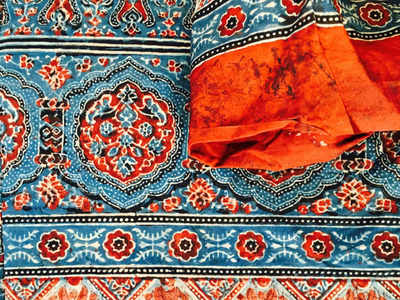Ajrakh printing, a traditional art form, has been an integral part of Kutch’s cultural heritage for centuries. Renowned for its mesmerizing patterns and vibrant hues, Ajrakh holds a significant place in the region’s artistic landscape.
Obtaining the GI Tag
The Geographic Indication (GI) tag was recently bestowed upon Ajrakh, acknowledging its unique geographical origin and authentic production techniques. This recognition distinguishes Ajrakh from imitations or replicas.
Artisanal Craftsmanship
Ajrakh artisans, who have inherited traditional methods passed down through generations, meticulously handcraft each piece. The GI tag serves as validation of their skill and dedication, offering protection against counterfeit products.
Collaborative Efforts
The journey to obtain the GI tag involved concerted efforts from artisans, government authorities, and cultural enthusiasts. It required documenting Ajrakh’s historical significance, traditional techniques, and distinctive qualities to showcase its value nationally and internationally.
Economic and Cultural Implications
With the GI tag in place, Ajrakh from Kutch is positioned to enhance its global market presence, attracting enthusiasts of fine craftsmanship and fostering sustainable economic growth in the region. Additionally, it highlights the importance of preserving indigenous art forms and empowering local communities through cultural heritage.
Multiple Choice Questions (MCQs):
- What does the Geographic Indication (GI) tag signify for Ajrakh printing?
- A) Recognition of its international popularity
- B) Acknowledgment of its unique geographical origin and authentic production techniques
- C) Permission for mass production
- D) None of the above
- Answer: B) Acknowledgment of its unique geographical origin and authentic production techniques
- Who are the artisans involved in Ajrakh printing?
- A) Factory workers
- B) Local farmers
- C) Skilled craftsmen who handcraft each piece using traditional methods
- D) Tour guides
- Answer: C) Skilled craftsmen who handcraft each piece using traditional methods
- What efforts were involved in obtaining the GI tag for Ajrakh?
- A) Solely artisan efforts
- B) Collaborative efforts from artisans, government authorities, and cultural enthusiasts
- C) Government intervention only
- D) No efforts were involved
- Answer: B) Collaborative efforts from artisans, government authorities, and cultural enthusiasts
- What are the implications of obtaining the GI tag for Ajrakh from Kutch?
- A) Loss of cultural significance
- B) Decrease in economic growth
- C) Enhancement of global market presence and sustainable economic growth
- D) No change in market dynamics
- Answer: C) Enhancement of global market presence and sustainable economic growth
